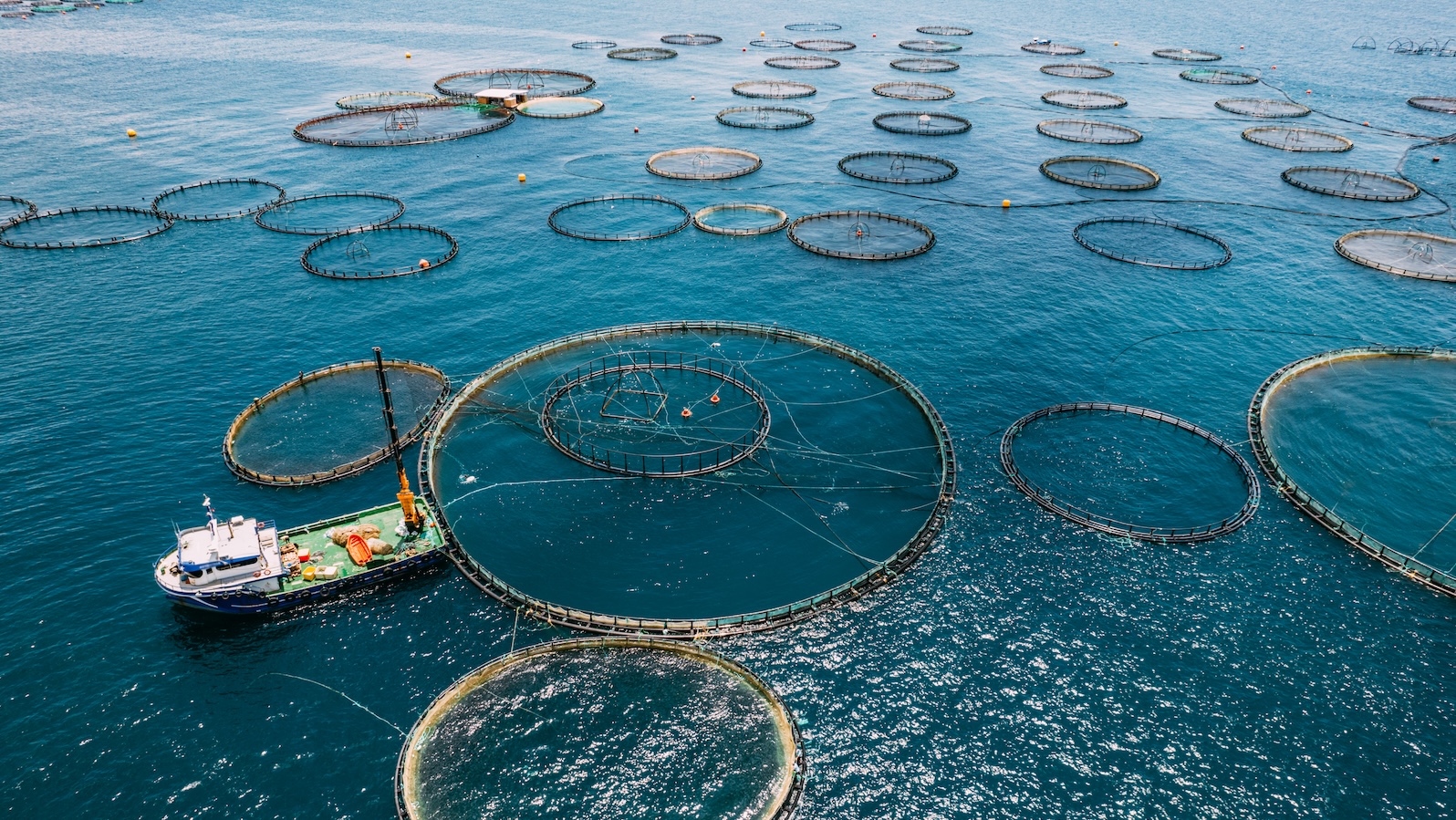The tart saltwater odor of fresh-caught shrimp hangs thick in the air, stronger even than the earthier scent of marsh and mud, at Bubba Gumbo’s and BG Seafood, a dockside restaurant and seafood market on Tybee Island, Georgia. This is one of many restaurants that dot the creeks and rivers snaking like veins through the coastal Georgia marshes. They run the gamut from the upscale and trendy to more bare-bones joints like this one, adjacent to a working dock.
These establishments serve all kinds of seafood, but shrimp is the main attraction. You can order them steamed, fried, or blackened, on top of a salad or sandwiched in a po’boy, or swimming in gravy and grits. Or you can dive into the local delicacy: lowcountry boil, a melange of shrimp, sausage, corn, and potatoes, spiced and steamed and served in a succulent heap best eaten with two hands and a huge appetite.
Shrimp are abundant in the ocean off Georgia’s coast, because the same network of creeks and rivers that houses the docks and restaurants serves as an ideal nursery for baby shrimp. And for a long time, those shrimp fed not just hungry diners but a thriving industry of boats to catch them, docks to serve the boats, and packing houses to process and distribute the shrimp – and all the people those businesses employ.
But that’s not the case anymore.
“The shrimp industry in Georgia is…really declining,” said Marc Frischer, a professor at the University of Georgia’s Skidaway Institute of Oceanography. “We’re actually at risk of losing it.”
Emily Jones / Grist
Fewer than 200 shrimp boats are working on Georgia’s coast these days, Frischer said, down from around 1,500 in the early 2000s. Shrimpers in other south Atlantic states and the Gulf of Mexico are facing similar declines.
The main culprit, scientists, shrimpers, and the International Trade Commission agree, is foreign imports: farm-raised shrimp from Asia and South America have flooded the market in huge quantities, cratering prices and making it impossible for the local industry to compete.
Around the same time that foreign competition skyrocketed, U.S. shrimpers started noticing another problem: a mysterious new shrimp disease. Scientists have only recently cracked that case, a condition known as black gill, and they say it’s linked to climate change: new environmental conditions have helped give rise to a new disease, a pattern that’s likely to repeat as the climate keeps warming.
The decades-long effort to understand black gill offers some lessons for the scientific community as more climate-driven diseases emerge, even as the still-rising ocean temperatures help black gill spread into a second species of Georgia shrimp.
In the Georgia legislature this year, coastal Republican Jesse Petrea decided to take on the issue of foreign competition with a bill requiring restaurants to disclose the origin of their shrimp – because even on the shrimp-rich coast, many are serving imports.
“You got pictures of shrimp boats on the wall, and you’re serving Indian shrimp,” Petrea said. “Somewhat consumer fraud in my opinion.”
To back up Petrea’s bill, SeaD Consulting, a Gulf-based firm that specializes in seafood mislabeling, performed genetic testing on the shrimp at 44 Savannah restaurants. The company found that 34 were actually serving foreign shrimp.
“Some people would say, ‘Well, but they’re cheap.’ They are, but at what cost?” Petrea said of the imported alternative. “I’ll pay a little more for domestic shrimp, and we all should recognize we have to pay a little more.”

Emily Jones / Grist
American waters simply don’t have enough shrimp or shrimpers to replace foreign imports completely, Petrea said, but he hopes clearer labeling can help domestic shrimp take over a little more of the market to keep local shrimpers in business. The bill didn’t pass this year, but he said he plans to bring it back next year. Alabama passed a similar law last year, and Louisiana and Mississippi already have shrimp labeling requirements.
But shrimpers’ problems also go beyond what shrimp restaurants choose to buy.
“There’s a lot of packing houses closing down,” said Charlie Phillips, who owns a seafood packing operation and a dockside restaurant in Townsend, Georgia.
And packers often control the docks. “A lot of the shrimpers are losing dock access. They don’t have a place to unload,” Phillips said.
Phillips doesn’t handle shrimp anymore, because just like shrimp boats, packing houses struggle to compete with cheaper imports.
Many in the industry are hoping that the Trump administration’s new tariffs will help by driving up the price of imported shrimp. But Phillips, who also sits on the South Atlantic Fishery Management Council, is skeptical.
“It’s still going to be cheaper than domestic,” he said of the imported shrimp. “For the most part, the customers are going to pay the price.”

Emily Jones / Grist
On top of the financial challenges, shrimpers have faced a medical mystery for decades.
Shrimpers started reporting dark discoloration in shrimp gills in the 90s. The condition came to be known as black gill and was soon prevalent from the Gulf to the Chesapeake Bay. The disease’s rise coincided with a sharp decline in shrimp catch numbers in Georgia in the 2000s and 2010s, raising concerns that the two were linked.
Now, Frischer with UGA said, he and his fellow researchers know what causes black gill and much more about its impact on Georgia shrimp.
The condition is caused by a type of microorganism commonly found in water known as a ciliate. The ciliate attaches itself to the gills, and the shrimp’s natural immune response produces melanin. Once there’s a high enough concentration of the melanin, the shrimp’s gills take on a darkened appearance to the naked eye. Affected shrimp are still safe for humans to eat, but their respiration rates and endurance are affected and they become more vulnerable to predators.
The particular ciliate that causes this disease has probably always been there, Frischer said, but it’s never caused a problem before – in fact, it had never been identified by scientists before he and his team did so. But climate change has shifted ocean conditions. Disease, he explained, arises when just the right conditions overlap among a host, a pathogen, and the environment – in this case, shrimp, the ciliate that causes black gill, and the ocean off the southeastern U.S. coast.
“All of these things can exist, but as our environment changes, we create that intersection that creates the disease,” Frischer explained. And he said that will keep happening as the climate continues changing. “What’s happened in the shrimp here, black gill, we’re going to see a lot more stories like that in many, many more species.”
The good news is that Georgia’s shrimp population seems to be doing all right, despite black gill. If shrimp manage to shelter from predators, it turns out they can recover because the condition is isolated to their gills. The gills are part of the shell that the shrimp periodically shed and regrow, so when they molt they can rid themselves of black gill. While the overall shrimp catch has dropped, that’s more likely because there are so many fewer boats because of the economic forces that Petrea and Phillips described. The amount of shrimp each boat brings in has remained steady – though Frischer said there isn’t great data from before the disease emerged. And as warmer water pushes the annual emergence of black gill earlier, it does appear to be hurting the summer stock of brown shrimp, one of two main species of shrimp caught by Georgia shrimpers.
But it’s purely luck of the draw that black gill has turned out to be survivable. As climate change fosters the emergence of more new pathogens, Frischer said, some will prove harmless but some will decimate species and ecosystems. There’s no real predicting which will be which. And Frischer said there’s a bigger lesson here about the scientific response to new diseases.
Black gill first appeared in the 90s, research began in earnest in 2013, and scientists only now have it figured out. That’s decades from outbreak to understanding, and it’s too slow, Frischer said, especially when a new climate-linked disease like this could just as easily wipe out a species as not. He compared black gill response to COVID-19 research, which built on decades of scientific understanding of viruses in general, coronaviruses specifically, vaccines, mRNA, and a host of other areas that provided a scientific baseline so researchers could quickly produce vaccines.
“We really need that basic research to deal with problems in something close to real time, not decades,” he said. “We don’t have decades.”
Source link
Emily Jones grist.org





